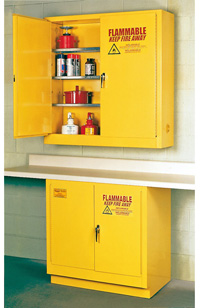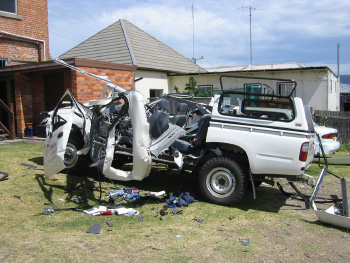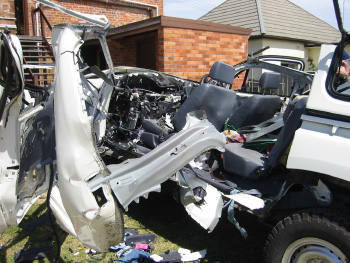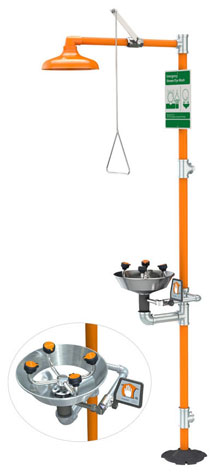



Find all of your laboratory and workplace safety supplies at Safety Emporium!
 Flammable Gas |
 Glossary Index |
 Flammable solid |
| MSDS Topics |
Free Sites | FAQ's | Regulations | Glossary | Software | Suppliers |
| Books | Forum | Poll | Fun stuff | Quiz | Store | |
| Understand your MSDS with the MS-Demystifier | Search ALL our MSDS info | |||||

Store your aerosol cans safely with flammable storage safety cabinets from Safety Emporium.
Flammable limits apply generally to vapors and are defined as the concentration range in which a flammable substance can produce a fire or explosion when an ignition source (such as a spark or open flame) is present. The concentration is generally expressed as percent fuel by volume.
Any concentration between the upper and lower limits can ignite or explode - use extreme caution! Being above the upper limit is not particularly safe, either. If a confined space is above the upper flammable limit and is then ventilated or opened to an air source, the vapor will be diluted and the concentration can drop into the flammable limit range.
Using a flammable material in a confined space without proper ventilation or engineering controls is asking for trouble. It is usually quite easy to reach the lower flammable limit. There are numerous cases where individuals have used a solvent, sealer, or other flammable materials such as acetone in a basement or closed room with inadequate ventilation and been severely burned and injured when the vapors were ignited by a pilot light, electric spark or other ignition source. Here's an example of one with a horrific burn injury that resulted in a $10.9 million jury award and another causing severe burns to three workers.
In laboratories, special precautions against accidental spark sources need to be taken whenever a chemical is used in closed space such as a fume hood or laboratory refrigerator. Special explosion-proof or explosion-resistant equipment (refrigerators, hot plates, stir plates etc.) should be used in these situations. The better solutions have the controls and thermostats located outside of the work or storage zone with as few electrical connections as possible on the inside. The best solutions are called intrinsically safe in that they have no inherent spark source. For example, stir plates can be driven by compressed air instead of an electric motor.
A spectacular example of the consequences of introducing a spark to a flammable limit atmosphere occurred in Newcastle, Australia in September of 2003. A pipe fitter left an acetylene cylinder inside his vehicle over the weekend. Either the cylinder had a small leak or the valve was not fully closed. The flammable limits for acetylene are extremely broad, 2.5% to 100% in air.
When the worker opened the door, an undetermined spark source (the door light switch, light bulb, cellular phone, static etc.) ignited the mixture with catastrophic results:


In the close-up view, notice how the roof/door pillars are bent completely sideways. It is amazing that the worker's injuries were confined to his face and ear drums.
In 2013, a similar incident occurred in Stoneham, MA. The driver escaped injury only because she used her remote key fob to activate the door locks (and thereby trigger the explosion of the welding gases in the trunk).

Safety Emporium carries all kinds of eye/face washes, safety showers, drench hoses and more.
If applicable and known, flammable and explosive limits will appear in Section 9 (physical and chemical properties) of the Safety Data Sheet.
When working with a
Always work with volatile substances in well-ventilated areas or use appropriate engineering controls. Even then, you may need to measure or calculate the concentration of the vapor to ensure that it does not reach the flammable limit range.
Flowing liquids can generate static electricity. When transferring liquids from one container to another, be sure to follow proper bonding and grounding procedures.
See also: combustible, flammable, flash point, vapor pressure, VOC.
Additional definitions from Google and OneLook.
Entry last updated: Thursday, October 6, 2022. This page is copyright 2000-2025 by ILPI. Unauthorized duplication or posting on other web sites is expressly prohibited. Send suggestions, comments, and new entry desires (include the URL if applicable) to us by email.
Disclaimer: The information contained herein is believed to be true and accurate, however ILPI makes no guarantees concerning the veracity of any statement. Use of any information on this page is at the reader's own risk. ILPI strongly encourages the reader to consult the appropriate local, state and federal agencies concerning the matters discussed herein.